
By Anita Brooks Kirkland
Information literacy, media literacy, digital literacy, transliteracy – the range of labels that have been put on these important concepts have proliferated over the past two decades. Canada’s leader in the field of research, resources and advocacy for media literacy, MediaSmarts, recognizes that these literacies have become increasingly integrated and interdependent as online social technologies evolve. Their more comprehensive label for all associated critical skills is Digital Media Literacy.
MediaSmarts’ definition of digital media literacy is based on the recognition that digital literacy does not replace or run parallel to media literacy but rather builds on it, while incorporating new concepts that arise from the difference between traditional and digital media – in particular, their networked nature. At the same time, many digital issues cannot be understood without the key concepts of traditional media literacy.
MediaSmarts, Defining Digital Media Literacy
Building a National Digital Media Literacy Strategy for Canada
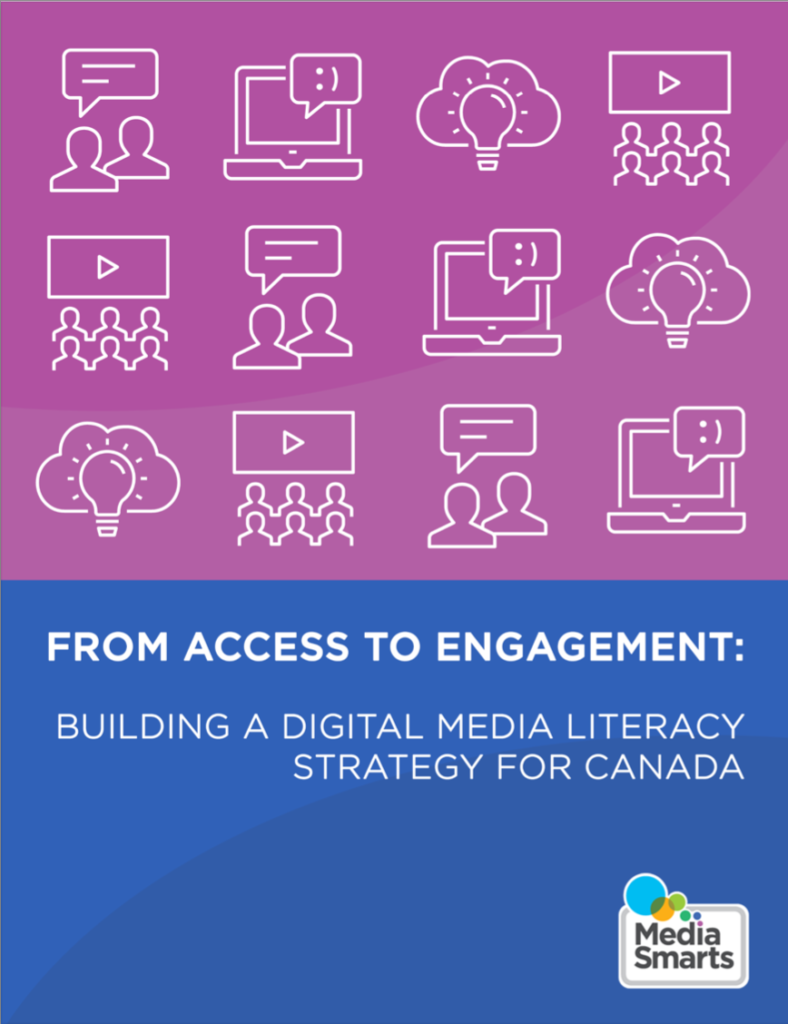
MediaSmarts believes that digital media literacy is essential for all Canadians to function as active and informed citizens, and has been advocating for a national strategy for many years. In April 2022 MediaSmarts released its report, From Access to Engagement: Building a Digital Media Literacy Strategy for Canada.
From Access to Engagement calls for a national policy approach to addressing urgent concerns that link digital media literacy to the needs of all citizens across our diverse society.
Digital media literacy is essential to an informed and engaged populace and electorate, but a lack of a national strategy is a barrier to developing such literacy in Canada. We are especially in need of a strategy that moves beyond only access and skills-based understandings of digital media literacy towards critical, inclusive, ethical, social and reflexive practices essential to fostering digital well-being, active engagement, and digital citizenship.
MediaSmarts, From Access to Engagement
MediaSmarts at the Treasure Mountain Canada Symposium 2022
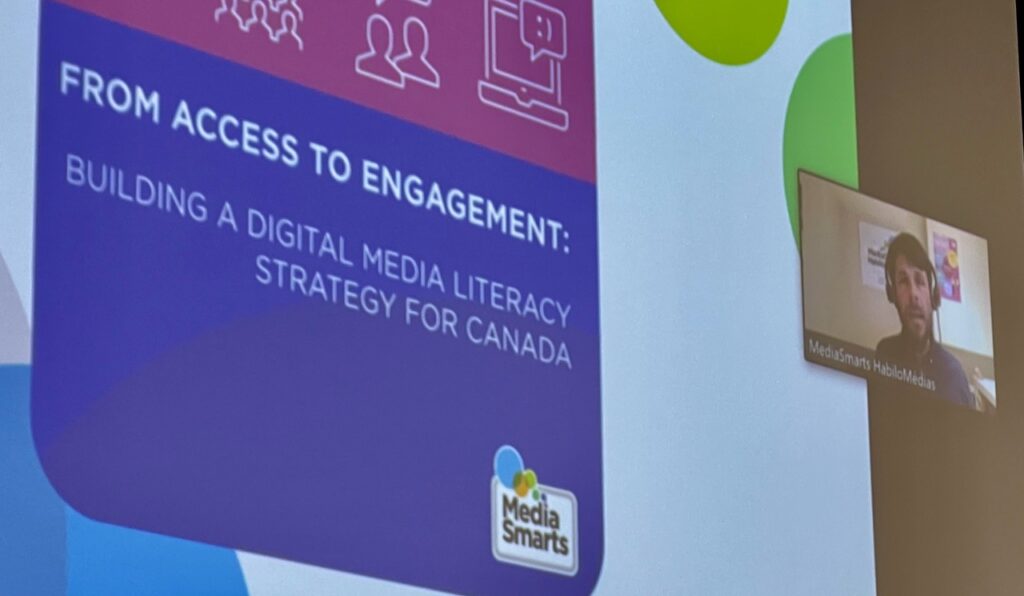
Canadian School Libraries was thrilled to have Matthew Johnson, the MediaSmarts Director of Education, as a spotlight speaker at our recent symposium, TMC7. Matthew introduced symposium participants to From Access to Engagement. His observations about the complexities of today’s digital media environment clearly stimulated our thinking.
The report emphasizes the importance of supporting community-based programs for all ages and audiences offered in a wide variety of settings. But we must understand that students’ right to education means they also have a right to digital media literacy instruction in school. Data from MediaSmarts’ longitudinal research, Young Canadians in a Wireless World, indicate that students feel they do not receive this instruction consistently.
Matthew Johnson’s superb presentation inspired us to think about the crucial role that teacher-librarians can continue to play to support teachers and students in bringing digital media literacy into the school in meaningful ways.
Digital Media Literacy Post-Pandemic
The pandemic shone a harsh spotlight on digital inequities that made the pivot to online learning such a challenge for educators, students, and their families. At the same time, we have observed that through all the restrictions and shut downs, school library professionals have been amazingly resilient and creative in increasing the development of the virtual library learning commons, with its inherent opportunities for infusing digital literacy in a participatory online learning environment.
Following up on Matthew Johnson’s presentation, I led a collaborative session to develop ideas and strategies for moving forward with digital media literacy in the library learning commons, post-pandemic.
I started by suggesting that we as teacher-librarians put renewed emphasis on leading learning for digital media literacy. As a longtime advocate for this important role I suggested a few starting points for renewing our approach.
Challenge our own assumptions. Start by re-examining our own assumptions about how kids use the Internet. MediaSmarts’ Young Canadians in a Wireless World study is a very good place to start. This comprehensive longitudinal study provides great insight into what students are actually doing with technology as opposed to what many adults think or even fear they are doing.
Be a constant learner. Things change so rapidly in the digital media environment that many educators despair of ever “keeping up”. Our expertise as teacher-librarians is to model inquisitiveness, and being in constant inquiry mode. If we do not attempt to understand the impact of algorithms on how we receive information, for example, how can we teach information literacy?
Update our approach to validating information when teaching research skills. Checklists are dead. Internet technology has changed radically since the days when we relied on the CRAAP method (Currency, Relevance, Authority, Accuracy, and Purpose) for example, to check sources. Sophisticated tools for creating and disseminating misleading and spurious content and for disguising the source and purpose render checklists irrelevant. A more investigative approach is far more relevant in today’s complex information environment. Our teaching needs to focus above all on nurturing a critical disposition.
Provide opportunities for student creativity in the use of digital media. Literacy is about reading and writing, and so too is digital media literacy. The physical and virtual maker spaces of the library learning commons provide wonderful opportunities for students to create sophisticated digital products for curriculum-related or independent learning.
Understand digital media literacy as an equity issue. Understand that digital media literacy is an essential part of the mission of the school library, and that it is critically interconnected with issues of equity, inclusion, diversity, and anti-racism. There is a strong connection between digital divides and social, cultural, and economic divides.
Seek out community connections to support digital media literacy. From Access to Engagement describes digital media literacy as a lifelong learning process, and emphasizes the importance of access to programs outside of the traditional school environment. Many of these programs are offered by public libraries, and we can help by promoting them within the broader school community, or even partnering with the public library or other community organizations in program delivery.
Advocate for informed policy in educational institutions for supporting digital media literacy. This would start at the most essential level, drawing all of the concerns discussed in this article to the attention of decision-makers and educational colleagues. It should also extend to advocating for the needs and concerns expressed by students about access to technology, privacy, and dispelling the surveillance culture so prevalent in schools when it comes to the use of technology. (CSL Journal, 2021).
Mining the Collective Knowledge of the Room
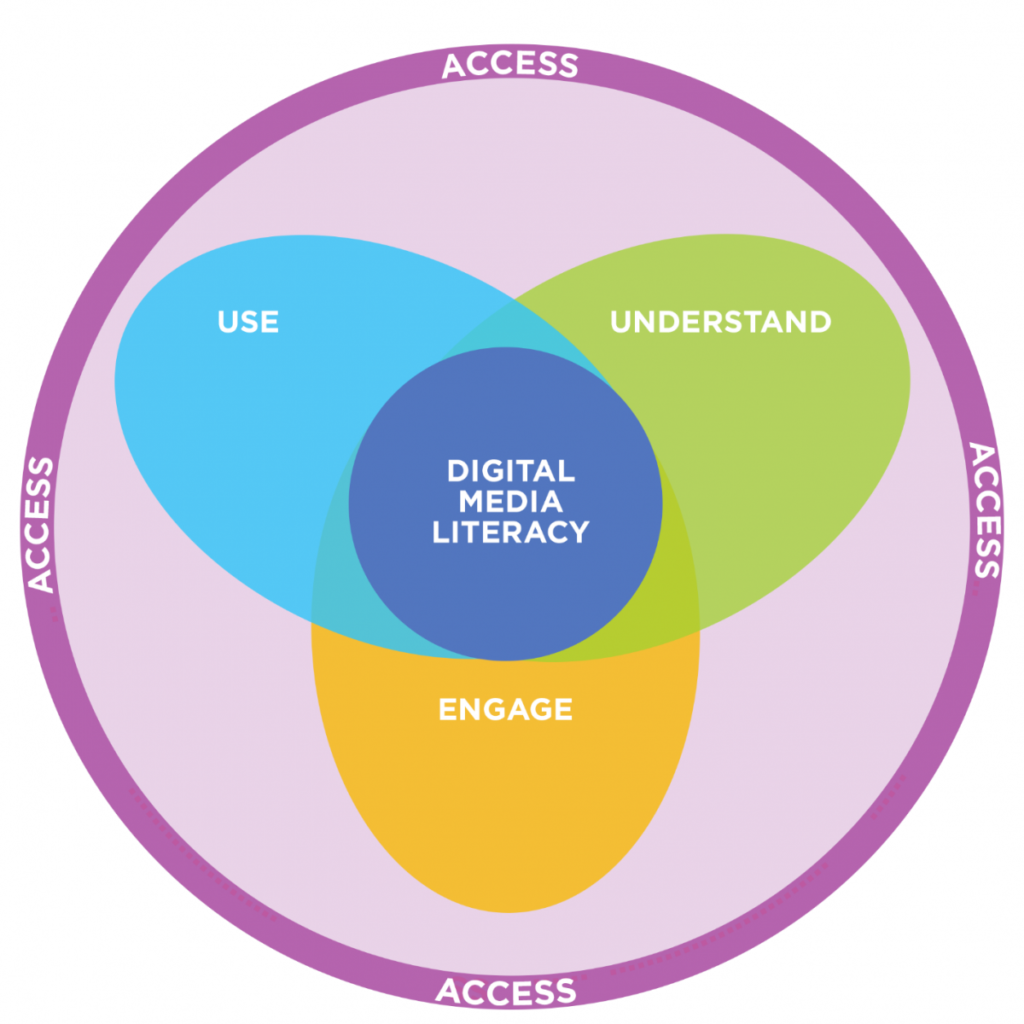
My suggestions are clearly focused on the professional competencies of the teacher-librarian. But what about the increased digital media competencies that students need to succeed? This was the question I posed to the room at TMC7.
Using the MediaSmarts model for Digital Media Literacy Core Competences, table groups put their heads together to discuss specific strategies, under the model’s key areas. Access is a precondition for digital media literacy: the associated technical and ethical skills form an underpinning for fluent and effective Use, which encompasses the technical fluency needed to safely and effectively use media, computers and the internet, tools and platforms. Understanding is the ability to contextualize and critically evaluate to make informed decisions; and Engagement means making use of media tools for personal expression and community involvement.
Within our limited time, TMC7 participants came up with wonderful ideas to consider under each competency, which are shared here in participants’ own words. Some clear themes emerged in each area.
Core Competency: Access
Basic Access:
- All classes need to have access to the school’s technological infrastructure, equipment and resources, in the LLC and across the school
- Ensure that all students have regular access to spend time in the LLC
- Ensure that all students have access to information. Many students don’t have internet access at home, so digital materials need to be supplemented by print if they are to be asked to working away from school
- Make print alternatives for school communications available for students and families who do not have Internet access at home
- Providing the ability to check out multiple devices through the LLC for use both inside and outside of the classroom (i.e. green screens, microphones, iPads, Chromebooks, headphones, chargers)
- Extended hours of operation for students to access resources before and/or after school and during the lunch hour. This is especially important for students without Internet access at home
Virtual Collections:
- Subscriptions to reliable and credible digital resources to supplement like databases.
- Promote district databases.
Equity and Diversity:
- Access considers neuro-diversities. Variety of resources are curated to support different learning needs.
- Find and share language translation tools for ELL (some tools are available for specific languages, but sometimes, some languages cannot be found)
- Access varieties of genderized roles in the media, and a variety of cultural ideas of age and beauty
- Hire diverse staff who speak multiple languages to be able to communicate effectively with parents and students
Usability:
- When we talk about access, issues are created by schools/districts and as professionals we have to engage with those policies/practices to advocate for and support the evolution of policy/practice for equitable access (I.e. there are well-intentioned blocks created by schools / districts that make access trickier such as complex password and tools that make it so difficult for users to navigate and then access digital sources)
- Make the “invisible” resources visible. Our collection is more than the physical space and books, and includes millions of digital resources.
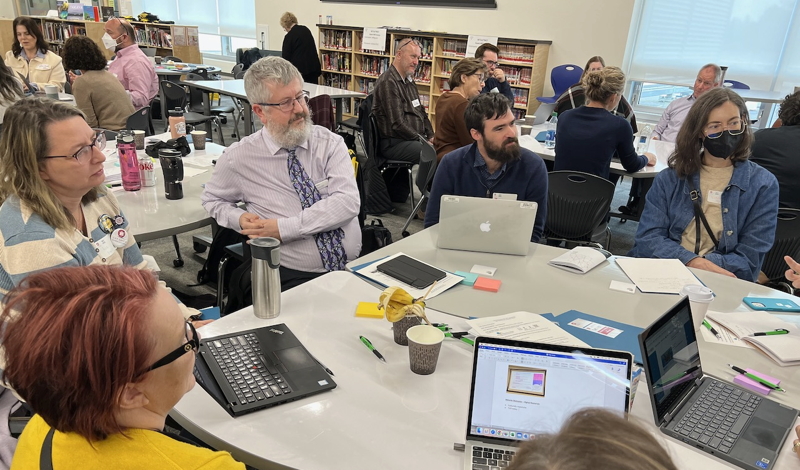
Core Competency: Use
Providing a Framework for Digital Fluency
- Use ISTE standards, plan ways to how to teach skills in a graduated manner so that digital fluency provides a foundation for higher end use
Meaningful Integration of Technology into Learning
- Learning has to be authentic for both the students and the classroom teacher – find out what they are already doing and integrate from there – the learning has to continue when we leave
New Contexts for Information Literacy
- Collaborate with teachers to have students critically assess resources as they create reference lists for their research
- Teach students how to credit sources from the youngest age, using online citation tools available in databases and other online tools
Supporting All Learners – Teachers and Students
- Support teachers in their learning
- Teacher-librarians taking the lead on teaching students and staff to produce different media products using technology using apps that are free and equitably accessible to all
Equity and Diversity
- Support parents in navigating technology for important communication, particularly immigrant parents who may not have any experience navigating government/school websites.
Core Competency: Understand
Use Valuable Time for Deeper Learning
- Develop resources, print and online, definitions that are also laid out in visual ways. Just quick 30 second lessons. E.g. this is what a search engine is, understanding Wikipedia, etc.
- Use the construct of the flipped library to create learning objects persistently available for flexible learning about the basics, available when and where it’s needed, freeing up collaborative time for deeper learning
Make it Real
- Use news in the class regularly to make it part of the day, and to teach the students how to ask questions about what they are reading, hearing etc.
Understand the Implications
- Develop awareness about emerging technologies and associated implications
- Understand that gender continues to be a construct that is defined by media and not by individuals
Core Competency: Engage
Timely Resources
- I would love it if I could go to MediaSmarts and have a weekly prompt that’s connected to each age group. E.g. What is this ad telling you? An activity that I don’t have to create/prep and instead put my time into delivering the lesson in a robust way. Maybe it’s about spotting scams, or critiquing news…
Inquiry Learning
- Provide authentic learning opportunities
- Engage in inquiry learning with topical issues and sharing it with the community (peers, colleagues, community partners, parents, etc.)
Student Voice and Choice
- Choice in demonstration of learning
- Make connections between purpose for writing, target audience, and effective media for reaching that audience. Encourage students to select the best medium for the message
Community Connections
- Engage with community leaders in a human library to explore societal issues and human realities, for example showing gender in different lights to tweens and teens
Moving Forward
In the short time we had at TMC7, symposium participants put together a very useful starting point for considering strategies to address digital media literacy. Canadian School Libraries will be using this input as we consider updates for Leading Learning: Standards of Practice for School Library Learning Commons in Canada. This living document provides a powerful framework for learning as we move forward and empower students with the critical skills they need for digital media literacy.
References
Brisson-Boivin, K. & McAleese, S. (2022). From Access to Engagement: A Digital Media Literacy Strategy for Canada. MediaSmarts. Ottawa. Accessed at: https://mediasmarts.ca/research-policy/access-engagement-building-digital-media-literacy-strategy-canada
Brooks Kirkland (2015). Flip Your Library Orientation. Canadian School Libraries Journal 2(2). Accessed at: http://journal.canadianschoollibraries.ca/flip-your-library-orientation/
Canadian School Libraries Journal (2021). Digital and Media Literacy in Changing Times: An interview with Dr. Kara Brisson-Boivin, Director of Research, and Matthew Johnson, Director of Education, MediaSmarts. CSL Journal 5(1). Accessed at: https://journal.canadianschoollibraries.ca/digital-and-media-literacy-in-changing-times-what-mediasmarts-wants-us-to-know/
MediaSmarts (2012-2020). Young Canadians in a Wireless World. MediaSmarts. Ottawa. Accessed at: https://mediasmarts.ca/research-policy/young-canadians-wireless-world/young-canadians-wireless-world-overview
MediaSmarts. Digital Media Literacy Fundamentals. Accessed at: https://mediasmarts.ca/digital-media-literacy/general-information/digital-media-literacy-fundamentals
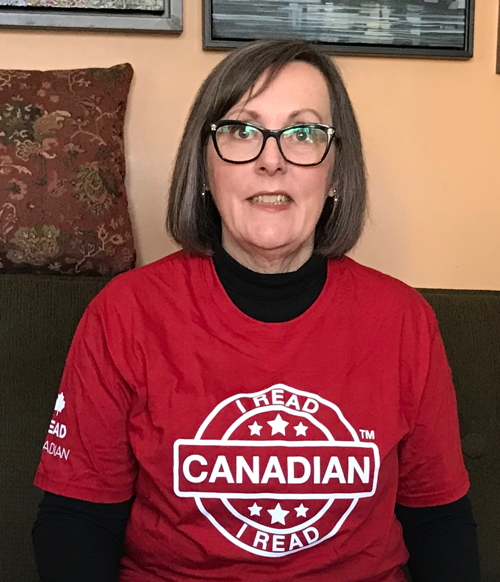
Anita Brooks Kirkland is the Chair of Canadian School Libraries and co-editor of CSL Journal. She is a past president of the Ontario Library Association and the Ontario School Library Association. Professional interests focus on information literacy, the virtual library, action research, and the role of the library learning commons. Anita draws on her extensive experience as a teacher-librarian and as a teacher educator, both in her previous roles as the library consultant for the Waterloo Region DSB and as an instructor in teacher-librarianship for the Ontario Institute for Studies in Education, University of Toronto.